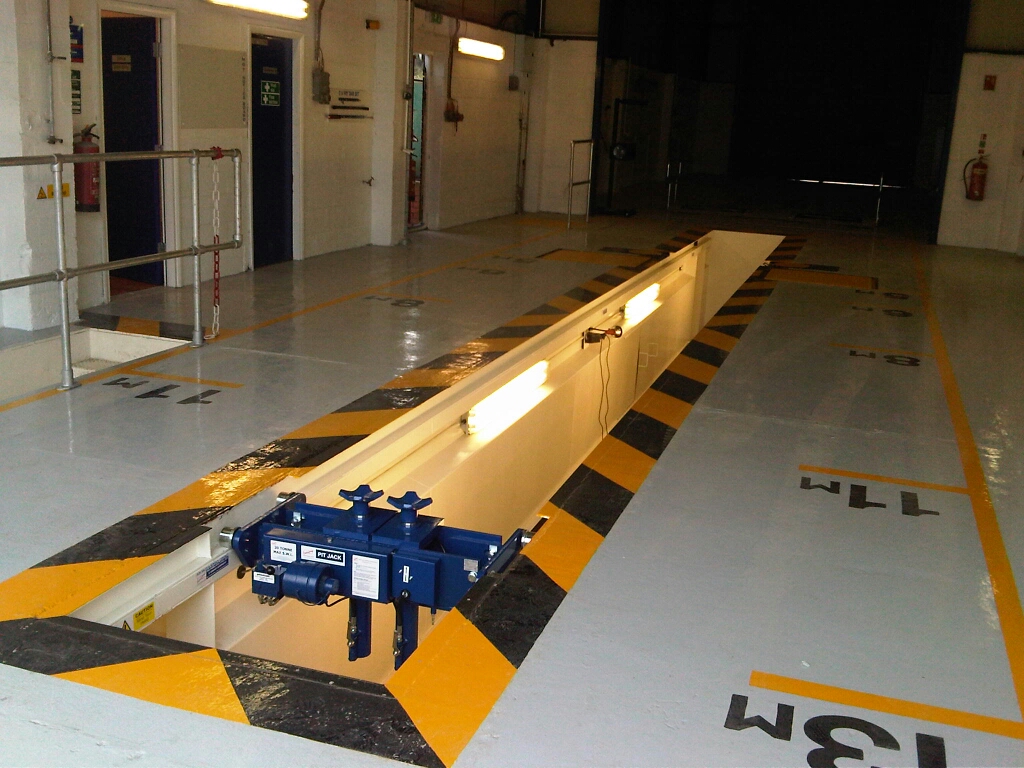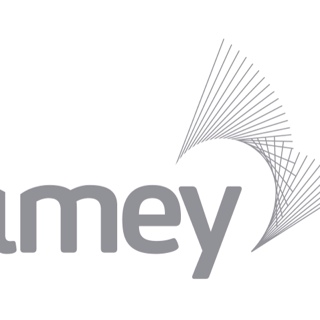Title Page
-
Standards Audit - Fixed Plant and Machinery
-
Conducted on
-
Prepared by
-
Location
-
Personnel involved
Consultation
-
Issues relating to fixed plant and machinery which require consultation
Consultation shall occur on issues which relate to fixed plant and machinery including:
(a) Proposed changes to the workplace which may impact on current fixed plant and machinery;
(b) Selection and procurement process of new fixed plant and machinery;
(c) Hazard identification and risk assessments involving fixed plant and machinery;
(d) New or changed health and safety legislation or industry standards relating to fixed plant and machinery;
(e) Changes in operating conditions;
(f) Changes in maintenance programs; and
(g) Changes in operating procedures, work instructions and work methods. -
Enter your findings, evidence reviewed and recommendations below
-
Select your judgment based on your findings
-
Enter any notes if you wish
Consultation with Third Parties
-
Parties that may be impacted
Consultation shall occur with all relevant parties whose health and safety may be impacted by issues relating to fixed plant and machinery including:
(a) Operators of fixed plant and equipment;
(b) Other persons exposed to hazard relating to fixed plant and equipment;
(c) Maintenance personnel and contractors who service the fixed plant and machinery;
(d) Neighbours and local community who may be impacted by equipment operation (e.g. noise and emissions);
(e) Building owners (if modifications to flooring or structures are required); and
(f) External authorities who administer regulations relating to plant and machinery. -
Enter your findings, evidence reviewed and recommendations below
-
Select your judgment based on your findings
-
Enter any notes if you wish
Design
-
Legislative compliance requirements
An assessment shall be conducted to identify all relevant legislative compliance requirements including:
(a) All applicable legislative references;
(b) Requirements for registration;
(c) Licensing requirements for usage; and
(d) Monitoring and reporting requirements. -
Enter your findings, evidence reviewed and recommendations below
-
Select your judgment based on your findings
-
Enter any notes if you wish
Applicable Industry Standards
-
Applicable industry standards
All relevant industry standards shall be identified and reviewed to assess all compliance requirements. -
Enter your findings, evidence reviewed and recommendations below
-
Select your judgment based on your findings
-
Enter any notes if you wish
Inherent Safety Design
-
Inherent safe design (AS 4024.1201)
Where practicable, the fixed plant and equipment shall incorporate into the design suitable features that avoid hazards or risks, including:
(a) Geometric and physical aspects of the plant and machinery;
(b) Interaction with people (i.e. ergonomic principles);
(c) Impact on noise levels;
(d) Choices of appropriate technology;
(e) Provision for maintainability; and
(f) Control of hazardous energies. -
Enter your findings, evidence reviewed and recommendations below
-
Select your judgment based on your findings
-
Enter any notes if you wish
Guarding and other protective devices
-
Guarding and other protective devices
Where inherent safe design cannot eliminate hazards or reduce risks to an acceptable level, guarding and other protective devices shall be used to protect persons from hazards. -
Enter your findings, evidence reviewed and recommendations below
-
Select your judgment based on your findings
-
Enter any notes if you wish
Safety Related Parts of Control Systems
-
Safety related parts of control systems (AS 4024. 1501)
The safety related parts of a control system which provide the safety functions of the fixed plant or machinery shall be designed and constructed to minimise risk of injury:
• During all intended use and foreseeable misuse;
• When faults occur; and
• When foreseeable human mistakes are made during the intended use of the machine as a whole -
Enter your findings, evidence reviewed and recommendations below
-
Select your judgment based on your findings
-
Enter any notes if you wish
Category of Controls
-
Category of controls selection (AS 4024. 1501)
Where the risk assessment requires the use of certain parts of machinery control systems (e.g. switches, monitoring system activators), the integrity and reliability of these devices shall be specified into five categories (B, 1, 2, 3 and 4) in accordance with AS 4024.1501. -
Enter your findings, evidence reviewed and recommendations below
-
Select your judgment based on your findings
-
Enter any notes if you wish
Prevention of Unexpected Start - Up
-
Prevention of unexpected start-up (AS 4024. 1603)
The design of fixed plant and machinery must include specification of designed-in means aimed at preventing unexpected machine start-up, in compliance with AS 4024.1603.
This includes unexpected start-up from:
• Power supply, e.g. electrical, hydraulic, pneumatic;
• Stored energy, e.g. due to gravity, compressed springs; and
• External influences, e.g. wind -
Enter your findings, evidence reviewed and recommendations below
-
Select your judgment based on your findings
-
Enter any notes if you wish
Emergency Stop Controls
-
Emergency stop controls (AS 4024. 1604)
Where the risk assessment requires fixed plant or machinery to be fitted with an emergency stop function, the following requirements shall apply:
• The actuators shall be clearly identifiable, clearly visible and readily accessible;
• The hazardous process shall be stopped as quickly as possible without creating additional hazards;
• The emergency stop control shall trigger certain safeguard movements where necessary. -
Enter your findings, evidence reviewed and recommendations below
-
Select your judgment based on your findings
-
Enter any notes if you wish
Safe Distances
-
Safe distances to prevent access to danger zones (AS 4024. 1801,2 & 3)
Fixed plant and machinery, and any required guarding or protective devices, shall be designed and constructed using the principles of safe distances to prevent access to danger -
Enter your findings, evidence reviewed and recommendations below
-
Select your judgment based on your findings
-
Enter any notes if you wish
Information for Safe Usage
-
Information for safe usage
Information shall be provided to the user about the intended use of fixed plant and machinery, taking into
account, notably, all its operating modes. It shall contain all directions and instructions required to ensure safe and correct use of the machine.
This shall include, but is not limited to:
(a) Signals and warning devices;
(b) Markings, signs and written warnings;
(c) Instruction manual; and
(d) Safe operating procedures. -
Enter your findings, evidence reviewed and recommendations below
-
Select your judgment based on your findings
-
Enter any notes if you wish
Contract Documentation
-
Contract documentation
All fixed plant and machinery projects shall be procured using contract documentation which includes all relevant EHSR specifications -
Enter your findings, evidence reviewed and recommendations below
-
Select your judgment based on your findings
-
Enter any notes if you wish
Validation of Design
-
Validation of design
The design of all fixed plant and machinery shall be verified to ensure that as a minimum:
(a) The designers have documented an appropriate design specification;
(b) Competent personnel have verified that designs and modifications meet specified health and safety compliance requirements; and
(c) Records such as design registration and design verification in meeting health and safety requirements are available. -
Enter your findings, evidence reviewed and recommendations below
-
Select your judgment based on your findings
-
Enter any notes if you wish
Design Hazard Information
-
Design hazard identification and risk assessment
An appropriate hazard identification and risk assessment shall be performed at the design stage which includes:
(a) Potential modes of failure;
(b) Identification of all hazards that are not practicable to eliminate;
(c) Details of the level of risk associated with the hazards; and
(d) Details of appropriate control measures in accordance with the hierarchy of controls to minimise the risks to the lowest level that is reasonably practicable.
Note: It is a legislative requirement for designers, manufacturers and suppliers to provide a risk assessment.
Note: Sites should confirm that the hazard identification and risk management methodology used by a third party is consistent with the methodology. -
Enter your findings, evidence reviewed and recommendations below
-
Select your judgment based on your findings
-
Enter any notes if you wish
Identification of installation tasks
-
Identification of installation tasks
The site shall ensure that all stages and activities associated with the installation process are identified including:
(a) Transport of equipment to the site (including loading and unloading);
(b) Storage of equipment at site;
(c) Preparation of the area where equipment is to be installed (e.g. removal of old equipment, preparation of footings and structural modifications);
(d) Movement of equipment from storage to final location; and
(e) Connection of services (e.g. power, fuel, compressed air, process water and fire services). -
Enter your findings, evidence reviewed and recommendations below
-
Select your judgment based on your findings
-
Enter any notes if you wish
Installation Project Plan
-
Installation project plan
An installation project plan shall be established to ensure that each stage of the installation process is conducted safely. The installation project plan should include:
(a) The allocation of an overall project manager;
(b) A project timeline and specific milestones;
(c) Responsibilities for each phase of the installation;
(d) Hazard identification and risk assessments for each phase of the installation process; and
(e) Safe work methods are established for all tasks involving hazards. -
Enter your findings, evidence reviewed and recommendations below
-
Select your judgment based on your findings
-
Enter any notes if you wish
Commissioning Engineers
-
Commissioning engineers
The commissioning engineers shall ensure that the equipment has been installed and operable in accordance with specifications. -
Enter your findings, evidence reviewed and recommendations below
-
Select your judgment based on your findings
-
Enter any notes if you wish
Engineering Department
-
The engineering department shall verify:
• All relevant items of plant and machinery have been certified and registered;
• Fire protection systems have been installed and are operational;
• Power supplies have been installed and have appropriate isolators fitted; and
• All guarding and protective devices are appropriate and operational. -
Enter your findings, evidence reviewed and recommendations below
-
Select your judgment based on your findings
-
Enter any notes if you wish
Maintenance Department
-
Maintenance department
The maintenance department shall verify:
• All instruction and service manuals have been obtained and filed;
• A preventative maintenance plan has been established; and
• Spare parts and consumables have been sourced and appropriate stocks established. -
Enter your findings, evidence reviewed and recommendations below
-
Select your judgment based on your findings
-
Enter any notes if you wish
Manufacturing department
-
Manufacturing department
The manufacturing department shall verify:
• Operational manuals have been documented and filed;
• Safety critical operating variables have been identified and operating criteria established for these variables;
• Standard operating procedures have been documented and approved; and
• Initial training for operators has been conducted. -
Enter your findings, evidence reviewed and recommendations below
-
Select your judgment based on your findings
-
Enter any notes if you wish
Health and Safety Representatives
-
Health and safety representatives
Health and safety representatives shall verify:
• All hazards that cannot be eliminated are identified and appropriately controlled;
• All guarding and protective devices are in place and operational; and
• The site emergency management plans are still appropriate. -
Enter your findings, evidence reviewed and recommendations below
-
Select your judgment based on your findings
-
Enter any notes if you wish
Competency Assessment and Training
-
Competency assessment and training
All persons operating fixed plant and equipment shall be:
• Made aware of all hazards and their associated controls;
• Trained the appropriate safe work methods and standard operating procedures; and
• Routinely assessed for competency. -
Enter your findings, evidence reviewed and recommendations below
-
Select your judgment based on your findings
-
Enter any notes if you wish
Supervision
-
Supervision
Site management shall ensure that appropriate arrangements are made to ensure:
(a) Individuals are supervised according to their capabilities and the degree of risk of the task; and
(b) There are supervisory arrangements that ensure that tasks are performed safely and work instructions and procedures are followed. -
Enter your findings, evidence reviewed and recommendations below
-
Select your judgment based on your findings
-
Enter any notes if you wish
Inspection, testing and monitoring
-
Inspection, testing and monitoring
Site management shall ensure that a routine inspection, testing and monitoring program is implemented to:
• Verify that all required hazard controls are in place;
• Monitor the continued effectiveness of the existing controls; and
• Identify any hazards that require additional hazard controls. -
Enter your findings, evidence reviewed and recommendations below
-
Select your judgment based on your findings
-
Enter any notes if you wish
Maintenance
-
Maintenance
Site management shall ensure that a maintenance program is implemented to:
• Monitor the condition of operating plant to minimise the chance of unplanned interruptions;
• Provide a maintenance schedule for all fixed plant and machinery;
• Identify and procure critical spares;
• Identify the root cause of plant and equipment failure; and
• Establish and maintain maintenance records.
Note: Where it is not practicable to procure and store critical spares on site, site management shall ensure that the critical spares are sourced and appropriate delivery timelines are in place to ensure business continuity -
Enter your findings, evidence reviewed and recommendations below
-
Select your judgment based on your findings
-
Enter any notes if you wish
Modification
-
Modification
All modifications to fixed plant and machinery that impact on EHSR shall be implemented by a process that ensures:
(a) Relevant employees are consulted on the potential changes (refer section 7.1);
(b) The potential impacts on EHSR are identified and assessed (refer section 7.2);
(c) The potential changes are evaluated (refer section 7.3);
(d) The changes are safely implemented (refer section 7.4);
(e) The changes are verified prior to becoming operational (refer section 7.5); and
(f) The changes are integrated into procedures, safe systems of work, training and supervision (refer section 7.6). -
Enter your findings, evidence reviewed and recommendations below
-
Select your judgment based on your findings
-
Enter any notes if you wish
Isolation of Energy Sources
-
Isolation of energy sources
Where equipment is no longer to be operated, it shall have all potentially hazardous energy sources isolated.
Note: All energy sources that could be potentially hazardous shall be isolated including:
• Electrical (Power supply, static charges, batteries and capacitors);
• Kinetic (Mechanical drives, moving and rotating machinery);
• Potential (Springs and structural strain);
• Pressure (Compressed air, vacuum and hydraulics);
• Gravity (Counterweights, vehicle runaways and elevated material);
• Radiation (Lasers, electro-magnetic fields and microwaves, X-rays and radioactive sources); and
• Hazardous substances (Corrosive, flammable, explosive and reactive substances).
The general process by which a hazardous energy is isolated is by:
(a) Identifying all potentially hazardous energy sources;
(b) Shutting down the plant in a controlled manner;
(c) Isolating, dissipating and restraining all hazardous energies;
(d) Securing and identifying the devices used to control the hazardous energy; and
(e) Verifying the effectiveness of the isolation prior to the commencement of the work. -
Enter your findings, evidence reviewed and recommendations below
-
Select your judgment based on your findings
-
Enter any notes if you wish
Disassembly / Removal
-
Disassembly/removal
Where equipment is to be disassembled and/or removed the site shall ensure that all stages and activities associated with the disassembly/removal process are identified including:
(a) Disconnection of services (e.g. power, fuel, compressed air, process water and fire services);
(b) Disassembly and dismantling;
(c) Movement of equipment to a storage location or transportation off site; and
(d) Rectification of the area where equipment is removed (e.g. structural repairs, filling in footings and cleaning). -
Enter your findings, evidence reviewed and recommendations below
-
Select your judgment based on your findings
-
Enter any notes if you wish
Disassembly / Removal Plan
-
Disassembly/removal project plan
A project plan shall be established to ensure that each stage of the disassembly/removal process is conducted safely. The project plan should include:
• The allocation of an overall project manager;
• A project timeline and specific milestones;
• Responsibilities for each phase of the disassembly/removal;
• Hazard identification and risk assessments for each phase of the disassembly/removal process; and
• Safe work methods are established for all tasks involving hazards. -
Enter your findings, evidence reviewed and recommendations below
-
Select your judgment based on your findings
-
Enter any notes if you wish
Selling Equipment
-
Selling equipment
If the equipment is to be sold or transferred to another site, the site is required by legislation to provide the purchaser with a risk assessment identifying all hazards and required control measures.
Records shall be maintained that enable The business to demonstrate that:
• The risk assessment was provided to the purchaser; and
• The purchaser acknowledged receipt of the risk assessment. -
Enter your findings, evidence reviewed and recommendations below
-
Select your judgment based on your findings
-
Enter any notes if you wish
Scrapping Equipment
-
Scrapping equipment
Where equipment is to be sold for spare parts or scrap, the sale documentation shall include a statement advising the purchaser that:
(a) The equipment is being sold under the understanding that it will be used for scrap; and
(b) If the purchaser intends to return the equipment to services, the purchaser will need to conduct a risk assessment.
Records shall be maintained that enable The business to demonstrate that the purchaser acknowledges that the equipment is sold to them for the purposes of spare parts or scrap. -
Enter your findings, evidence reviewed and recommendations below
-
Select your judgment based on your findings
-
Enter any notes if you wish
Evaluate Guarding and Control Systems
-
Evaluate guarding and control systems
The site shall review and document the adequacy and effectiveness of fixed plant and machinery guarding and safety controls at least every 12 months. -
Enter your findings, evidence reviewed and recommendations below
-
Select your judgment based on your findings
-
Enter any notes if you wish
Management Review
-
Management review
The site management team shall periodically review the effectiveness of the site’s fixed plant and machinery systems.
Note: The management review should consider:
• The adequacy of the site’s risk profile;
• Results from audits;
• Results from observation programs;
• Adequacy of procedures;
• Learnings from incidents that occurred on the site as well as incidents across (i.e. Flash reports);
• Changes in legislation, industry standards and technology; and
• Changes to site plant and machinery -
Enter your findings, evidence reviewed and recommendations below
-
Select your judgment based on your findings
-
Enter any notes if you wish













